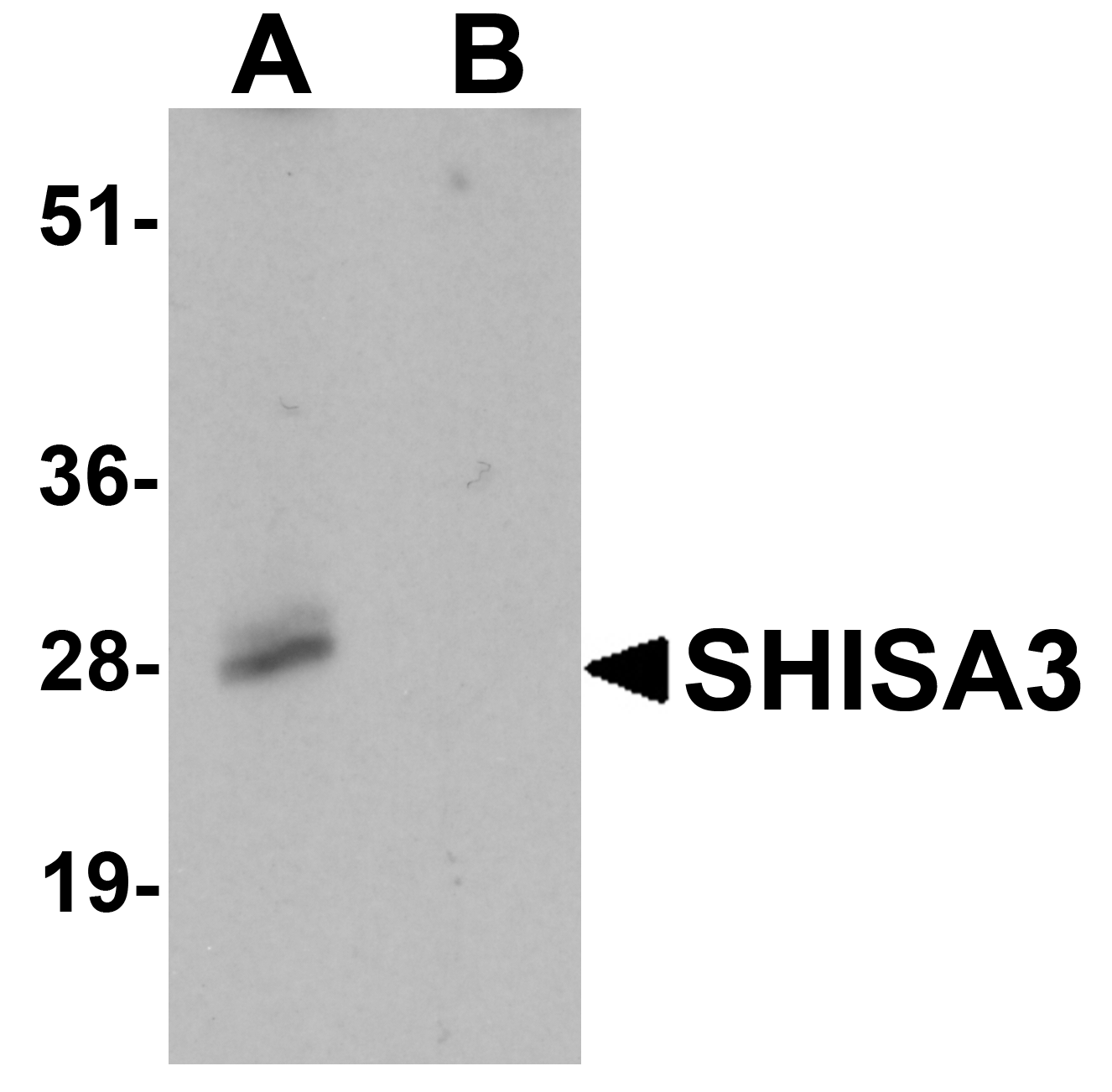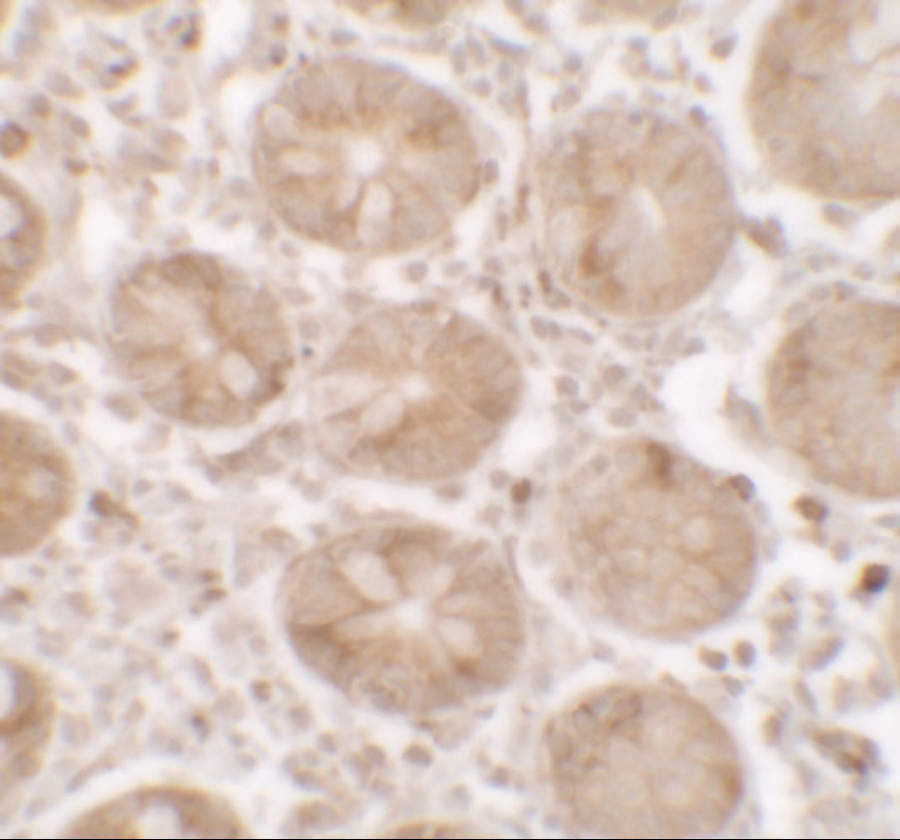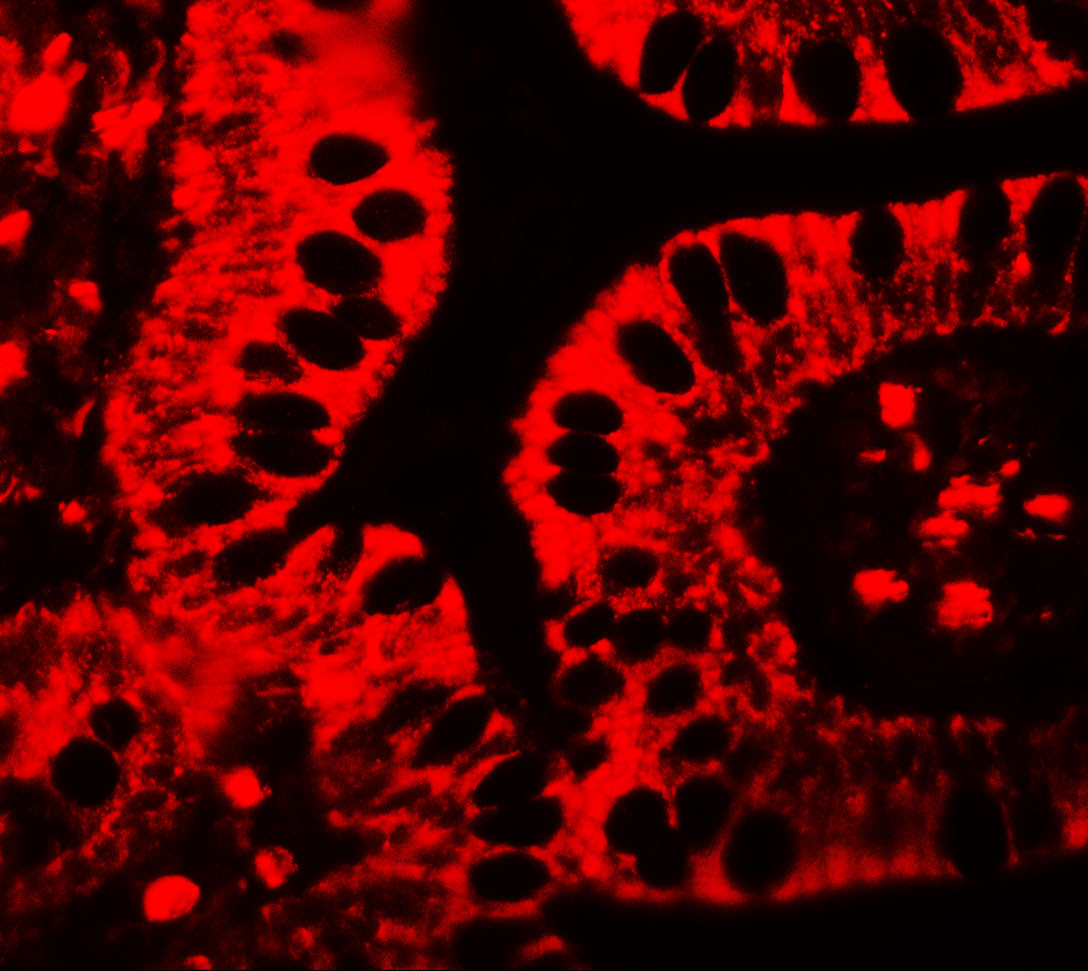SHISA3 Antibody
| Code | Size | Price |
|---|
| PSI-7275-0.02mg | 0.02mg | £150.00 |
Quantity:
| PSI-7275-0.1mg | 0.1mg | £449.00 |
Quantity:
Prices exclude any Taxes / VAT
Overview
Host Type: Rabbit
Antibody Isotype: IgG
Antibody Clonality: Polyclonal
Regulatory Status: RUO
Applications:
- Enzyme-Linked Immunosorbent Assay (ELISA)
- Immunofluorescence (IF)
- Immunohistochemistry (IHC)
- Western Blot (WB)
Images
Documents
Further Information
Additional Names:
SHISA3 Antibody: hShisa3, Protein shisa-3 homolog
Application Note:
SHISA3 Antibody can be used for detection of SHISA3 by Western blot at 1 μg/mL.
Antibody validated: Western Blot in human samples; Immunohistochemistry in human samples and Immunofluorescence in human samples. All other applications and species not yet tested.
Antibody validated: Western Blot in human samples; Immunohistochemistry in human samples and Immunofluorescence in human samples. All other applications and species not yet tested.
Background:
SHISA3 Antibody: SHISA3 plays an essential role in the maturation of presomitic mesoderm cells by individual attenuation of both FGF and WNT signaling. The Shisa family of single-transmembrane proteins is characterized by an N-terminal cysteine-rich domain and a proline-rich C-terminal region. Its founding member, Xenopus Shisa, promotes head development by antagonizing Wnt and FGF signaling. Shisa physically interacted with immature forms of the Wnt receptor Frizzled and the FGF receptor within the ER and inhibited their posttranslational maturation and trafficking to the cell surface. Loss of Shisa function sensitized the neuroectoderm to Wnt signaling and suppressed head formation during gastrulation.
Background References:
- Furushima K, Yamamoto A, Nagano T, et al. Mouse homologues of Shisa antagonistic to Wnt and Fgf signalings. Dev. Biol. 2007; 306:480-92.
- Pei J and Grishin NV. Unexpected diversity in Shisa-like proteins suggests the importance of their roles as transmembrane adaptors. Cell Signal. 2012; 24:758-69.
- Yamamoto A, Nagano T, Takehara S, et al. Shisa promotes head formation through the inhibition of receptor protein maturation for the caudalizing factors, Wnt and FGF. Cell 2005; 120:223-35
Buffer:
SHISA3 Antibody is supplied in PBS containing 0.02% sodium azide.
Concentration:
1 mg/mL
Conjugate:
Unconjugated
DISCLAIMER:
Optimal dilutions/concentrations should be determined by the end user. The information provided is a guideline for product use. This product is for research use only.
Immunogen:
SHISA3 antibody was raised against a 15 amino acid peptide near the center of human SHISA3 .
The immunogen is located within amino acids 120 - 170 of SHISA3.
The immunogen is located within amino acids 120 - 170 of SHISA3.
NCBI Gene ID #:
152573
NCBI Official Name:
shisa homolog 3 (Xenopus laevis)
NCBI Official Symbol:
SHISA3
NCBI Organism:
homo sapiens
Physical State:
Liquid
PREDICTED MOLECULAR WEIGHT:
Predicted: 26 kDa
Observed: 28 kDa
Observed: 28 kDa
Protein Accession #:
NP_001073974
Protein GI Number:
122937450
Purification:
SHISA3 Antibody is affinity chromatography purified via peptide column.
Research Area:
Stem Cell
SPECIFICITY:
SHISA3 antibody is predicted to not cross-react with other SHISA protein family members.
Swissprot #:
A0PJX4
User NOte:
Optimal dilutions for each application to be determined by the researcher.
Related Products
| Product Name | Product Code | Supplier | SHISA3 Peptide | PSI-7275P | ProSci | Summary Details | |||||||||||||||||||||||||||||||||||||||||||||||||||||||||||||||||||||||||||||||||||||||||||||
|---|---|---|---|---|---|---|---|---|---|---|---|---|---|---|---|---|---|---|---|---|---|---|---|---|---|---|---|---|---|---|---|---|---|---|---|---|---|---|---|---|---|---|---|---|---|---|---|---|---|---|---|---|---|---|---|---|---|---|---|---|---|---|---|---|---|---|---|---|---|---|---|---|---|---|---|---|---|---|---|---|---|---|---|---|---|---|---|---|---|---|---|---|---|---|---|---|---|---|---|





